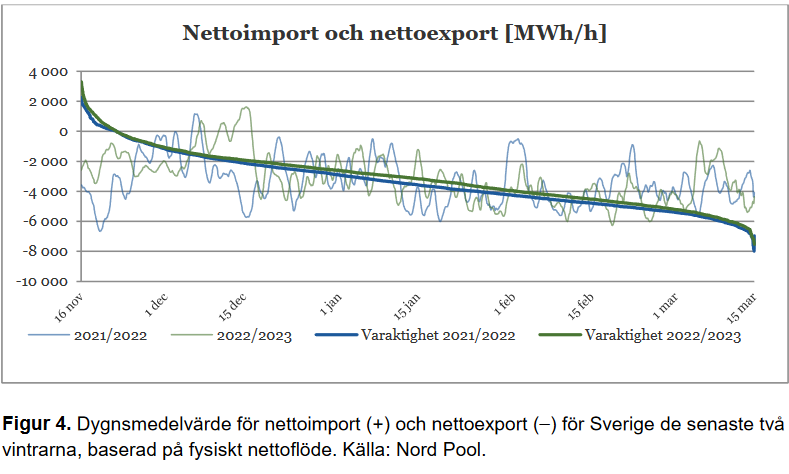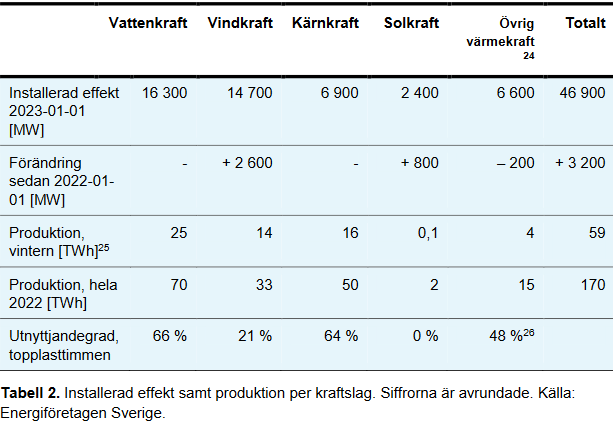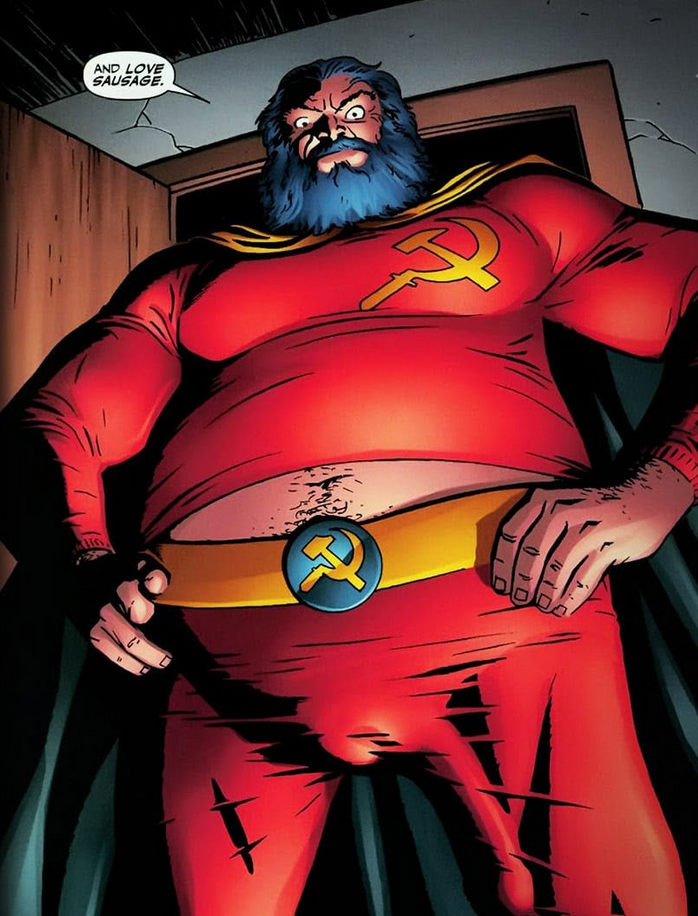Honestly I don’t care if it’s solar, wind, geothermal, biofuel, or nuclear, as long as it displaces fossil fuels. And it’s feasible on a very near time scale.
If Sweden did an honest investigation and found that renewables would be more costly and take longer, let em get nuclear.
We need an “all of the above” approach. This fight between nuclear and renewables is just stirred up by fossil fuel interests. Either is good. Both is good.
This isn’t an “all of the above approach” though, it’s a “cancel the short term plans and pretend we’re going to do something later” approach.
Yeah, if you decide to ramp up nuclear now, you’re only going to see the results in 10 years. Nothing is stopping you from continuing to add wind, solar and stuff like home/grid batteries in the meantime. Pretty sure Sweden has plenty of hydro storage options as well, which can be easily used to regulate the fluctuations wind and solar give you.
Mines take a lot longer than 10 years, as do power-plants (the whole thing starting at permit submission and ending at last reactor coming online). 2045 is optimistic.
Yeah, 10 years was a best case scenario, where you basically already have the plans drawn up and are ready to build. Not sure what your point about mines is, I’m assuming they’d be importing uranium?
Still requires expanding uranium production somewhere, and likely also buying from Russia.
Yeah, the Russia issue is kind of hilarious. You’re trying to reduce fossil fuel use so you’re not dependent on Russia for energy, so instead you’re going to use nuclear, which uses fuel rods almost exclusively refined by Russia.
Not sure if new mining would be needed, but I guess that depends on what happens in Niger.
Sweden has uranium reserves and produced it’s own uranium in the 60-s. Though I think laws currently prevent mining.
I’m sure they’ll take just as much care for indigenous reindeer herders when choosing where to poison thousands of km^2 of land as they did when using them for hostage shield politics to sabotage the wind rollout.
Or is an entire country supposed to run indefinitely on the single year worth of reserves already known?
Why are people in this thread acting like the intent here is to cut renewables? The target was deemed unrealisitic to hit andr raised concerns about reliability.
They are simply removing potential future renewables that have not been paid for or even ordered yet from the agenda and replacing the planned supply with nuclear, which is carbon neutral and requires less workers maintaining larger fields of solar and wind, two types of power that are not reliable during a Scandinavian blizzard… Something Sweden has to consider among many other things
I can’t find any indication that they’re changing their target…it’s just going from “100% renewable” to “100% fossil-fuel free”.
Sounds like a win-win to me, Outdated Nuclear fission reactors are among the safest and cleanest forms of energy to ever exist, to say nothing of modern designs and theoretical ones that at the bare minimum could fill in the gap until Fusion becomes economically viable or manage some kind of orbital/space based solar collection grid.
Two things that are relevant is that Sweden is very, very dark during the winter which reduces the profitability of solar and also that it’s extremely difficult to get approval for wind turbines right now.
Municipalities have the power to veto building projects and almost all of them choose to block wind power installations. Wind turbines generate sound, both audible and infrasound (which can disturb sleep), and are sometimes considered a bit of an eyesore which can both reduce the value of properties near them and make people less inclined to move to that region which reduces tax income for the municipality. This could be offset by taxation of the wind power, but currently all taxable income from wind turbines go to the state instead of any of the local governments.
There was recently an inquiry into how to make municipalities more likely to approve wind power construction and the restriction that the government gave them was that they were not allowed to suggest tax revenue being diverted to the local government. Which was the only suggestion that they said would be effective.
So… yeah.
If Sweden did an honest investigation and found that renewables would be more costly and take longer, let em get nuclear.
Bullshit. Renewables are cheap as chips.
Think of a traditional power plant. There are 4 main cost catagories: Construction, Maintenance, Fuel, Demolition.
-
In a traditional plant, over the life of the plant Fuel will by far be the biggest cost.
-
For renewables, Construction, Maintenance and Demolition cost more (issues such as remote locations, weather, smaller generators means more generators which increases the mean time to failure) however they have ZERO fuel cost.
Renewable generation is profitable as fuck, moreso than nuclear. Your average wind farm pays itself off in less than 5 years.
This is a right wing government backing the interests of fossil fuels, by implementing policy that delays any meaningful reduction in fossil fuel use.
Sweden already has a significant surplus of electricity production, to the degree that we are one of the largest exporters in the EU and have had several bouts of negative spot prices this past summer.
However, we also have an effect deficit for the colder part of the year. Two-thirds of simulations by SVK (our national power distributor) find that the peak-load hour during the winter 26/27 will have a deficit equivalent to three gen-II nuclear reactors running at 100% (10’000MW), and 10 continuous hours of blackouts due to power shortage. This is during the coldest part of the year when solar is ineffective, and additionally is often combined with high-pressure fronts, which means low wind speeds.
In Sweden upwards of 75% of homes get their heating from electricity, and potentially a full day without power in temperatures of beyond -30°C would literally mean people freezing to death.
Our power bill for December was 800€, and we both have geothermal heating and reduced our indoor temperature significantly, averaging 14-18°C indoors for the month. This was more than January, February and March combined. Meanwhile, the bills for all summer months put together (May, June, July and I expect also August) cost less than the bill for April (100€).
The most viable short-term solution they’re looking at is (unfortunately) reopening old oil plants from the 60s & 70s however, this might not be possible either, due to newer EU legislations. Bringing them into compliance in time could cost 100’s of millions of SEK, which ironically is more than the “prohibitively expensive repairs” that the previous gov:t cited when they shut down 4 nuclear reactors 2015-2020.
Link to article for the doubtful - It’s in Swedish, so you’ll have to use a translator.
Assuming you’re telling the truth that there’s a massive shortfall in December already (a provable lie ) then you are suggesting the solution for an urgent shortfall of around a TWh per year is to build 10GW of nuclear plants which will be ready in 2045 for €300 billion and run them at an operating loss for 10-11 months per year.
This in order to provide low grade heat which could be stored in a district heating system for a few dollars per kWh for a total cost of about 3% of your suggestion or even in batteries for about 20% of the cost (which would also run at a profit the rest of the year and make the hydro go further).
Nuke shills say some colossally stupid things, but this really takes the cake.
Since you couldn’t be arsed to check for yourself before throwing out baseless accusations, here’s a translation of a relevant part from the linked article. I doubt you’ll read it, but it’ll be here for anyone else that stumbles across this thread.
The past winter was at times dramatic, for example when several nuclear power reactors were shut down for repairs. But thanks to the fact that mainly households had previously reduced consumption clearly in step with the rampant electricity prices, Sweden managed to maintain the power balance even in the worst hour, the so-called peak load hour.
“But if we had maintained the consumption, we would have had to cut down.”, says Lowina Lundström, Division Manager Systems at Svenska kraftnät.
The electricity had not been enough
At that time, the import would not have been enough to cover the electricity demand during the peak load hour on December 16, 2022, between 09:00 and 10:00. The import was then at a maximum of 3,290 MW, approximately equivalent to three nuclear power reactors, which was the highest level to date.
(Svenska Kraftnät a.k.a Swedish Power Grids is our national power distribution agency)
Btw, your source is 4 years out of date, and accounts for neither daily nor hourly power balance.
Here’s an up to date source on monthly power balance.
Here’s a report on peak loads in various northern european countries.
Here is an actual relevant source on the topic (again, in Swedish).

The above figure is taken from this report by SVK.
So the problem was nuclear being unreliable, and you can’t comprehend the idea of picking the worst recent year before dropping demand due to covid (or clicking on the year dropdown or hitting the hourly output).
The capacity factor for nuclear power in Sweden (including losses from curtailment) was 83% of installed capacity during 2022, which exceeds the global average for that year (80%), by comparison wind had a capacity factor of 26% for the year. Hence, the issue is not reliability, but rather a lack of capacity. 1700MW (20%) of nuclear has been decommissioned since 2018 (which is why those stats are entirely irrelevant to the current situation). Hence that a the unexpected outage of a single reactor (1160 MW or 17% of total capacity) could have such a large impact.
Even with that outage, nuclear power remained the energy source with the greatest capacity % during the 22/23 winter (80%), despite being lower during peak demand. “Kärnkraft” is nuclear power.

So, in summary, you are either clueless regarding our situation in Sweden (I sincerely hope that is the case) or actively spreading misinformation (which would be the more unfortunate option).
Another bullshit attempt at paltering. Capacity factor isn’t reliability. Failing unpredictably when needed and when asserting that it will work then is unreliability. Your own assertion is that the need was for a handful of hours when the nukes failed.
For renewables, Construction, Maintenance and Demolition cost more
This is less true as time goes on. CCGT and coal has substantial overlap with all-in cost of firmed PV and onshore wind just in terms of capex and FOM. Nuclear O&M overlaps with all-in cost of wind or PV (although not the latter in sweden).
SMRs (most of the proposals to reduce cost) are also substantially less efficient than full sized reactors and the high grade Uranium or Uranium in countries you can pollute without consequence is mostly tapped out so prices are increasing (currently about $3/MWh for full scale or $6/MWh for an inefficient small reactor). By the time an SMR finally comes online, just the raw uranium will cost as much as renewables, let alone the rest of VOM (which is still a minority of O&M which is far, far less than Capex).
Anyone suggesting new nuclear should be regarded as either someone lying to maintain a nuclear weapons program, a scammer, or a russian agent trying to sell dependence on rosatom.
The first is potentially defensible, but they could also not lie instead.
This is a right wing government backing the interests of fossil fuels, by implementing policy that delays any meaningful reduction in fossil fuel use.
Simply incorrect and ignorant and I could leave it at that.
But I won’t so here:
-
Nuclear is carbon neutral
-
The majority of Swedens energy production is still renewable and will continue to grow
-
Nuclear is absolutely necessary for load balance
-
Current nuclear plants are nearing their end of life and needs to be replaced
- I’m not critising nuclear for not being green.
- Renewables should grow (they’re profitable), but there should be further incentivised growth to help reduce reliance on fossile fuels more quickly.
- Yes, nuclear is brilliant for voltage and frequency stability. Large turbines have momentum in their spinning mass, when loads are switched on and off they keep spinning the same speed. However there are other options, eg rotating stabilisers, often used on very large ships but land installations are now being made also. These can be built without the nuclear red tape.
- Replacing existing nuclear plants is always a decent thing to do. You skip over many of the hurdles by building on the same site under the same nuclear permits. However taking money away from renewables to pay for this is questionable at best.
I think Sweden does have some geographical complications, along with a lackluster transmission network. These are much harder to get private investment for. However if there was a decent transmission network then there would be more utility of renewable generation in the north as well as the capability for import of energy from neighbouring countries or even export when Sweden has an excess.
Putting my balls on the table, I reckon if Sweden put all the money they’ve got in nuclear into transmission first and then renewables, I reckon they could switch off more fossil fuels more quickly.
The points I listed are the strongest arguments to expand nuclear power which both the left and right of Riksdagen generally agrees on.
So how this is a right wing conspiracy to further the fossil energy industry as you point out is still to me a mystery, that’s all you need to explain.
The fact that left and right wing parties both currently (in the middle of soaring energy prices and a cost of livings crisis) agree with measures that support fossil fuel interests does not change the fact that the Swedish government (which is currently right wing) is implementing policies that benefit the fossil fuel industry.
Also, I question the nuance in that - I’m sure many in the left that support nuclear investment, but are less happy about renewable targets being scrapped.
However I apologise if I came on a bit too hard with it being a left vs right wing issue. It’s wealth vs society.
i heard that nuclear still kind of heats up the earth since its not outputting what has been put in by the sun before. Supposedly thats a problem since space is a good insulator.
It’s a negligible amount of heat. Something like 0.000001% of the greenhouse effect from fossil fuels. Almost unmeasurable.
-
have you ever been in Sweden? it is a a rocky mountainous and mostly dark region. they only renewables that they can easily manage is geothermal and iirc they do not have the correct crust for it
According to another comment they have plenty of renewables up in the north but only use about 30% of that capacity. So it seems the main issue is with the transmission network for the country, its ability to get power from one place to another.
Instead of investing in 20 year nuclear power plant plans, they should be looking at accessing and expanding the available renewable generation in the short term.
the wind mills would be in inaccessible areas so you are better to just go with nuclear and invest in transmission from settlement to settlement instead to the turbines
-
Yeah 100% agree with you. I’m surprised that this is the case given the 2045 time scale but we’ll have to wait a couple of decades and see how it pans out I guess.
Imo, renewable should still be the target, nuclear should be the bridge towards renewable until it’s feasible enough
Which is exactly what they’re doing if you read the article.
Building a stop-gap that will be ready 20 years after you get to the main destination for 10x the price isn’t a bright move.
This would be a stronger argument, if it wasn’t 20 years old already.
The best time to ignore the nuke shills and build wind and solar was the 1940s when both wind and solar thermal were proven economically and fission hadn’t happened yet.
The second best time is now.
The best time to ignore the nuclear scare mongers us whenever they open their ignorant mouths.
You’re confusing tired contempt with fear.
No, you definitely have an irrational fear of nuclear power.
Removed by mod
I disagree… the biggest “issue” I have with “renewables” is the storage problem… That 20 years gives you time to figure out something while reducing the carbon output
Battery storage is already cheaper than nuclear.
…no it won’t because the new nuclear will generate nothing for 20 years. Whereas the renewables will reduce some carbon, even if we pretend that storage is both unsolvable (as opposed to already cheaper than nuclear) and necessary in a grid that’s already 40% hydro.
I don’t get why people here are so hyped. Why is it a good thing to completely dump renewables?
It’s just the target being dumped. We can’t go 100% renewable and have nuclear. So by expanding nuclear the target has got to go. Renewables will still be expanded in Sweden.
deleted by creator
An extreme excess of renewables would be viable as a singular source to displace fossil fuels, and could be built more quickly than new nuclear. There already is some nuclear, the wind is always blowing somewhere, and the sun shines through the clouds.
Renewable generation is here now, it is proven and it is cheap & highly profitable.
Sweden had fully displaced fossil fuels from its power grid with the help of a combination of Nuclear and Renewables. However, a policy of phasing out nuclear power by the previous gov:t has caused the reintroduction of fossil fuels into the grid. Of all the options, this is truly the most stupid timeline.
It gets worse: countries that phased out coal quickly for political reasons have often replaced them with many small containerised gas and diesel generators, that pollute far more per MW than the coal they replaced and are situated closer to populated areas, because it’s easier to hide a small-ish yard full of containers behind a tall sound-dampening fence.
According to this https://en.m.wikipedia.org/wiki/Nuclear_power_in_Sweden the phase out was already stopped in 2010, confirmed in 2016. Also here https://en.wikipedia.org/wiki/Energy_in_Sweden I can see no significant rise in fossil fuel production when nuclear did go down.
It’s a recent development, and not by a huge amount, but it has been big new here since the so-called Karlshamn Power Plant (oil fired), generally reserved for shoring up the electricity supply during shortages returned into commercial service during the summer of 2020 due to the owning company determining it to be profitable (something which hadn’t happened in decades and as such made national headlines). Since then it has been active increasingly often. It is currently the only active fossil-fuel powered plant in the country AFAIK.
(Articles in Swedish, feel free to use a translator, or ask me to get it translated for you if you have trouble.)
https://www.di.se/nyheter/lonsamt-for-kraftjatten-att-elda-olja-i-sverige-igen/
https://www.svt.se/nyheter/lokalt/blekinge/experten-16
https://www.nyteknik.se/energi/nytt-elprisrekord-oljeledade-kraftverket-i-karlshamn-igang/965489
https://www.uniper.energy/sverige/nyheter/allt-mer-frekvent-drift-pa-karlshamnsverket/
Removed by mod
Completely replacing fossil fuels with renewables is possible - and has been achieved - in some regions. Off the top of my head, both Denmark and Scotland have produced an excess of their daily consumption through renewables alone. It isn’t hard to imagine that if we built a large enough excess of renewable generation we could account for the times when the wind isn’t blowing by importing and exporting between areas where it is.
Nuclear can fill a role in the grid, and is needed long term for a bit of voltage and frequency stability, however a shit ton of renewables can be built and energised quicker than a little bit of nuclear.
If we want to turn off the fossile fuels as quickly and as much as possible, renewables are needed first. Investing in nuclear takes investment away from renewables and delays things. Cancelling renewables in favour of nuclear, like this, with 20 years to build 10 plants, is just ridiculous. How many MW of renewables could they build in 10 years with half that money?
Renewables aren’t being cancelled. What is being done is creating a target to construct nuclear power, which inherently means that Sweden is no longer aiming for 100% renewables, but instead a target where 100%=renewables+nuclear.
What’s being proposed here is 10 new nuclear plants to help cover 200% of current demand, which is the predicted demand in 20 years’ time.
Currently there are 3 plants in Sweden providing 30% of the country’s demand. If we assume the new plants are each as big as the current 3 (chances are they’ll be bigger), then you’re looking at at least 100% of the country’s current demand as nuclear power, or more than 50% of the predicted demand in 20 years.
With a conservative estimate, if all existing plants close and each new plant is 20% larger, that’s around 4 times the country’s current nuclear capacity, to be built over 20 years. 60% of the predicted demand in 20 years. That most definitely is putting nuclear before renewables, and will incur significant expense.
What I’m saying is that more of that money should go towards an excess of renewable capacity now, along with the transmission infrastructure to connect it, which can be built more quickly and cheaper than nuclear such that fossil fuels can be switched off sooner.
Once fossil fuels are completely replaced, then it will make sense to prioritise nuclear development. Right now, nuclear is a medium-long term solution to a short term problem, where fossil fuels end up being the only option in the meantime.
*10 nuclear reactors, not 10 plants. There are currently 6 reactors in operation in Sweden and another 4 were shut down by the previous government.
It’s essentially a plan to modernize and renew the Swedish nuclear fleet.
Scotland could provide enough renewable energy for the whole of the UK. The only reason the PM says they need more fossil fuel is that his family entered into a billion pound contract with BP.
I think Scotland’s total MW capacity is more than the UK’s demand, however the actual generated amount hasn’t been an excess of the country’s demand - not like Denmark, which has produced more than 100% of its capacity as renewables while exporting excess to other countries. However, that probably doesn’t account for curtailment - the grid operators can tell larger renewable generators to limit or switch off depending on demand.
When this happens typically the renewable generator still gets paid as if they were generating at capacity.
Removed by mod
It isn’t an opposition, but a matter of priority.
The goal is to switch off fossil fuels as quickly as possible. Nuclear takes a long time, renewables can be done quickly - very quickly.
If we spend money on nuclear, that’s money that could have been spent on renewables, money that could have turned off fossil fuel generation more quickly. Thus it makes more sense -right now- to spend money on renewables. Once we have an excess of renewables and have reached net zero, then nuclear builds should come into play. While the nuclear is being built, rotating stabilisers can be installed to provide voltage & frequency stability.
Removed by mod
What fossil fuel will they import in the next 10-20 years that it will take to make the nuclear plants?
Nuclear and renewables shouldn’t be opposed. Ideally we would have both. The problem is we needed to stop burning fossil fuels a long time ago so we don’t have another 10-20 years to keep burning fossil fuels while we wait for nuclear plants to be made.
The fossil fuel industry knows that if we take the nuclear ONLY route that we will continue to burn their fuels for decades longer. So they lobby to support that option, hoping that a lot or some of the nuclear plants will never even get finish like we’ve seen happen so many times.
In addition to that, countries don’t have infinite money to spend on energy. So any amount of the budget spent on nuclear will mean less spent on solar and wind. Solar and wind are the only sources that can be deployed fast enough to allow us to avoid extinction.
Removed by mod
If we don’t replace fossil fuels now we go extinct. It’s really that simple.
Removed by mod
Idiotic straw men about assuming order of storage rollout aside. Replacing just that portion which is profitable right now will lower emissions over the next century than stopping and building nuclear instead.
Removed by mod
Humanity won’t go extinct because of it, modern society is the one who will suffer.
It’s takes 10-15 years to make a new nuclear plant. If you choose nuclear without renewables you would have to burn so much fossil fuels while waiting for your nuclear power to become ready that the human race would be extinct before you have a decarbonized energy grid.
deleted by creator
a fully nuclear grid is way less viable than a fully renewable one
deleted by creator
because nuclear power plants are very slow to regulate, which you need to be able to do in a power grid.
deleted by creator
Uh… France has operated their plants in load-following mode. It’s doable. Can’t control the weather though.
even france barely uses the load-following mode on their power plants and instead use gas power plants because its increadibly un-economical. and yes you cant control the weather which is why renewables are more decentralized and widespread. its literally a non issue.
Being able to pay even more than running at full power would cost to throw some energy away isn’t power regulation and doesn’t at all explain why france produces 10-20% of their electricity via dispatchable sources even on a warm summer night where demand is around half of their nuclear fleet’s alleged capacity.
It means your gas shares will pay dividends for a few extra years.
People here have better reading comprehension apparently and know that dumping a 100% target doesn’t mean dumping renewables.
Going ‘all in’ on something usually means neglecting everything else.
Hell yeah, tell me the best future isn’t nuclear power and electric rail like an old space Lego set.
Nuclear’s probably not a great long term choice since it’s a lot more expensive than renewables.
But that’s just the generated per kwh cost, not taking into account when the energy is generated. To compare a full renewables grid to a renewables nuclear mixed grid you need to take into account massive energy storage systems and their inefficiencies and possible material shortages. We can’t just compare the currently favorable cost per kwh without taking into account problems as we scale into less reliable energy sources.
You will need long term storage in both cases. Nuclear can’t act as a peaker because you can’t quickly ramp up or down the generation. Nuclear can only perform as baseload which, in theory, could be provided by a renewable energy mix if the install base is high enough.
I don’t disagree with your point that it isn’t a simple direct comparison but any sensible energy mix will still require storage. I find it difficult to see the economic case for nuclear if renewables can be installed in sufficient quantities, given that nuclear is roughly 4 times as expensive as solar and wind.
Nuclear can only perform as baseload
That’s only true for NPPs built decades ago. Modern designs can also do load-following power. For peaks you have renewables, of course, they complement each other. Diversity makes a healthy grid.
The plants that can allegedly do this almost never do, and most of them have had maintenance issues which cost more to fix than replacing them with renewables.
Modern designs can also do load-following power.
I think this is a maybe in terms of what the grid needs. Will be great if nuclear is built that genuinely supports system demands.
Diversity makes a healthy grid.
Couldn’t agree more.
It’s good that they can do it. Even better if they don’t need to.
Niclear has high investment cost and very low production cost which incentivises runnig at max output for as long as possible. This might block out renewables from the grid if their production cost is higher and make it less profitable to build them. So its really not a Symbiosis between nuclear and regenerative
With 100% renewables you would need almost 100% storage and potentially for multiple days, with a nuclear baseload you’d only need storage for the peaks, you could even use excess renewables to charge up the storage for these peaks.
What do you mean with 100% Storage? And why would you need it for multiple days if you have a grid that transports energy all around the continent and in future possible worldwide?
I guess we can talk about transmission then, yes if you can get enough renewable energy across a continent then in theory you can transmit it to where it is needed, however you would need a LOT of transmission capability that is not currently available. The current interconnects can handle an impressive amount of load but you’re not going to transmit enough power for all of sweeden from spain. There are some massive transmission projects underway that should help address this but they’re still not going to be enough to cover a 100% outage for most places. So a cost analysis would have to be done to determine if massive transmission projects are better than building nuclear plants. Keep in mind, these same transmission lines can transmit nuclear power as well so they should be built regardless of what energy source you use.
What do you mean with 100% Storage?
you would need a LOT of transmission capability that is not currently available
can be build faster and cheaper than nuclear, doesn’t need fuel and needs to be build anyway. We get the cheapest, strongest and least dangerous grid if we invest in more renewables, storage and better transmission. And that’s something we can get done fast and start harvesting the profits in a few years.
Not sure about the 100% point but you will certainly need long term storage which is an unsolved problem. A point I wanted to make was that with enough renewables installed you have the baseload. You would also have an excess of production at peak times that would be useful to store long term.
My personnal view is that a sensible energy mix should have some nuclear but I don’t think it is the key to solving our future energy requirements and should be minimal as it isn’t good value.
Entirely unsubstantiated. Renewables require storage only for the peak demands, otherwise, they function as a baseload, provided that there is a sensitive balance of wind and solar power generation installations.
If you want 99.9999% uptime with no backup then the nuclear fleet will need months or years of storage due to the prevalence of correlated unplamned outages.
Back in reality, a good enough renewable system with >95-99% uptime has less than 10% of the storage that will be found in the accompanying country’s EV fleet. Even if you are too allergic to nuance to understand the real solution for the remainder, simply planning a renewable rollout and assuming existing fossil fuel peakers for down periods over 12 hours will take 20-100 years to release as much carbon as delaying one of the years waiting for late, over budget nuclear reactors.
Even if you are too allergic to nuance to understand the real solution
And thus you have shown that your mind is made up and no amount of evidence will sway your decisions. Good day.
I’m plenty open to evidence, it’s just every time I look at some it shows a new lie that nukebros tell. Every single talking point isnutter bullshit to the pooint where if you look it up you find that nukes are significantly worse by whatever hair-splitting metric is being used ti try and distract from their main downsides.
There is a fully renewable solution for the 2-5 >100 hour events a year where battery storage is unsuitable, but it requires holding more than one thought in your head at a time (thermal storage, dispatchable load and w2e is one combo).
France, with all it’s maintainance disasters with their nuclear reactors shows us yet another problem: how to properly cool the water for the generator? With sinking fresh-water levels in rivers and fastly rising water temperatures nuclear reactors become less reliable. Wind and solar output on the other side will in an ironical way get a little more reliable, as there will be more of both.
One of the biggest problems that we have today when it comes to energy production (and a whole lot of other things) is putting all our eggs in one basket. Well how the fuck does this change anything?
I am not anti-nuclear, but dumping ALL renewable targets is moronic. Now you’ve simply replaced one egg for another egg, but it’s still just ONE egg. A stable energy portfolio is diversifying your sources.
The article doesn’t say if they intend to have 100% nuclear or if they dropped the target of 100% renewable to have a mix with more nuclear
Great observation 👍 could well be a misleading title
Dosent sweden already have a fairly high and fairly stable energy production through their hydroelectiric power plants . Wouldnt it be better to just build more of those.
I’m not sure the situation in Sweden, but usually the easily developed hydro sites have already been built, and any remaining sites will be quite expensive compared to power generated. Additionally, climate change can threaten the reliability of hydro as snowmelt and precipitation become more unpredictable. Also, they generally have a fairly large negative environmental impact aside from climate change.
I’m sure there are some projects that will pencil out but probably not enough to decarbonize the whole energy grid.
Yeah afaik there are a couple of suitable places for more hydropower but no plans for more due to, like you said, local environmental reasons.
That said, sweden is basically already completely “decarbonized” (if anything can really be decarbonized), we only have a reserve oil powerplant that runs for maybe a couple of days each year (~9 days last year, though last year was especially bad). Sweden also generally has a pretty big net surplus (usually about 10-20% of production) of green power that is sold to the european grid.
We do, but enviromental regulations pushed through during the past two decades is essentially preventing any new or expanded hydro projects. In fact, a lot of smaller hydro plants are instead being demolished due to being incompatible with these laws.
What? They are demolishing hydro plants? Do you have a source for that?
Below is a news article from Swedish Television (SVT) translated to english using LLM. Couldn’t find it in english. Original article
New Stringent Environmental Requirements Threaten Small Hydropower Plants
Published on May 10, 2022
Over a 20-year period, around 1,800 small hydropower plants in Sweden are set to have their conditions re-evaluated by the land and environmental courts to ensure they meet the requirements of the EU’s Water Framework Directive. According to hydropower plant owners, these evaluations entail strict demands and increased costs that threaten the existence of culturally significant small hydropower plants.
Located along the Alsterån River in Nybro Municipality, one of Magnus Edvinsson’s hydropower plants has been in operation since the 1800s. He, like many other owners of small hydropower plants, is facing upcoming re-evaluations of environmental conditions to determine if they comply with environmental legislation.
According to Magnus Edvinsson, the measures and court costs could spell the end for many small hydropower plants.
“We’ve seen costs of 10 million Swedish Kronor for a single small hydropower plant. That completely shatters the economy of a company like this,” he explains.
Ensuring Fish Passage
The aim is to establish modern environmental conditions for all watercourses in Sweden. This includes promoting biological diversity, which might involve requirements for fish passages to be built, allowing aquatic organisms to move freely in the waterways.
The Water Authorities have determined that each water body must achieve good ecological status. According to Magnus Edvinsson, the environmental quality standard imposes excessively high demands and could result in costly reconstruction efforts.
“In our industry organization, we’ve already received indications that 30 percent of the small hydropower plant owners in the initial review group are considering dismantling their facilities even before the court review takes place. It’s not unlikely that it could reach up to 50 percent choosing to decommission once they are in court. It’s a shocking figure, and this is happening at the same time as we are experiencing the worst energy crisis in modern history,” says Magnus Edvinsson.
10 reactors? How long is that gonna take to build? A single reactor can take at least 8 years. So hopefully they aren’t ditching renewables all together. You can build a lot of solar and wind farms in those 8 years.
This is exactly the issue. Nuclear is necessary in the long term for a clean grid, however it will take much longer than as well as take investment away from renewable projects - which could achieve net zero more quickly than nuclear.
We should be going hard on current renewable technology, build out a massive excess (to account for reduced generation, the wind is always blowing somewhere and the sun shines throguh the clouds), and then once we have met all our energy needs from clean energy and phased out fossil fuels we can focus on fortifying the grid - in particular at that point we will need large turbines with lots of rotating mass, for voltage and frequency stability, which is a perfect role for nuclear to fulfill.
One of the problems that we have is that a big chunk of the country for a month don’t have a single ray of sunshine due to polar nights. The problem is that that is when it’s complete darkness leading up to the point and going out of it takes time as well so solar is not an option at that time of the year. On top of that most of the land is “disputed” by indigenous people (don’t mark my words it’s a very touchy subject I don’t know how to express it better) or it’s a nature reserve area so wind farms are out of the question. So the only thing we have left is hydropowered electricity which isn’t clean at all as it destroys the natural course of the river up stream, destroys the river beds down stream and extremely reduces the fish populations as well as any greenery relying on the reliability of the rivers.
With that said if we simplify it a bit about 46% of Swedens total energy production comes from the northern hydroelectric plants and wind farms and because of lacking infrastructure it can’t be transferred efficiently to southern Sweden where most of the consumption is happening. Of these 46% about only 30% is currently used but more companies have decided to establish their production in thr northern region due to the surplus of energy in this region.
Southern Sweden on the other hand gets a lot of their energy from unreliable wind farms as well as nuclear energy. However due to the layout of the land hydroelectric is only viable in some places which have already been exploited. We can only install so many wind farms until it affects quality of life to the people and animals living nearby. On a good day southern Sweden is having a net zero energy production and consumption. Those days are fewer and further in between. Currently since closing a reactor two years ago we have had to reinstate an oil burning facility as well as buying unclean electricity from abroad to keep up with demand.
So investing in nuclear to stabilise the production is one of very few options we currently have.
It’s either that or moving either part of the population or factories to the northern part which is not really viable or sustainable eitherm
It sounds like the biggest issue is transmission, you need high capacity transmission lines between the north and south. That way, you could not only use more than the 30% currently, but expand that capacity. Also, transmission between neighbouring countries could help.
Currently we sell the surplus in the north to Finland and Norway as well as to Denmark and Germany in the south when we are over capacity.
What we would need is a better connection between north and south but that hasn’t been a priority until now and it’s 30 years too late.
What we would need is a better connection between north and south but that hasn’t been a priority until now and it’s 30 years too late.
The best time to plant a tree…
Nuclear takes a hell of a lot of subsidised state money, and that pot of money only ever grows. Renewables don’t need state money, they’re profitable on their own. Renewables will grow readily if the transmission infrastructure is there, and moreso if the planning process capacity is expanded (hire more civil servants), let alone if rates were subsidised anywhere near the same level as nuclear.
The best case scenario would be the government itself building state-owned renewable infrastructure, where the profit from selling cheap electricity on the commercial market would come directly back to the community. Most wind farms are owned by one company and managed & operated by another, with the turbine manufacturer providing turbine services. There’s no reason the government couldn’t be the owning company.
Funnily enough, projects for green steel and the construction of new massive factories in Northern Sweden mean that the power surplus is expected to be gone by 2030. We need more electricity production, from all carbon neutral sources being built everywhere, ASAP.
We need more electricity production, from all carbon neutral sources being built everywhere, ASAP.
Exactly. We need it quickly.
Renewables are here now and can be deployed quickly. Nuclear takes time and is often heavily delayed and over budget.
We need nuclear as well, but we need renewables first, to build capacity as quickly as possible. We need a huge excess of renewable capacity, to account for times when the full capacity isn’t available. We shouldn’t expect to be using the full capacity at any time.
Once we’ve phased out fossil fuels, then nuclear will be important. But right now nuclear only serves to sustain our dependency on fossil fuels.
Care to elaborate on this?
Once we’ve phased out fossil fuels, then nuclear will be important. But right now nuclear only serves to sustain our dependency on fossil fuels.
The two largest economies with the low reliance on fossil fuels for energy (Sweden & France) get significant portions of their energy production from nuclear power. Iceland relies on geothermal, and the others (Tajikistan, Switzerland, Costa Rica, Norway) have lots of hydro capacity, which are all excellent, but also largely dependent on geography.
I don’t have figures to hand, but I’d gladly dig into them with you, if you have suggestions.
Sweden does have some amount of fossil fuel generation. The article claims 3 nuclear plants provide 30% of the country’s needs right now, and says the target being set is for 10 new nuclear plants over the next 20 years. In 2045 (~20 years), demand is predicted to be double that of today.
If we assume all current nuclear plants will close and all new plants will be 20% larger, that means these 10 new nuclear plants will fulfill 60% of predicted demand in ~2045. Again, I’m happy to review actual numbers - I imagine most if not all of these 10 plants are at least in early design proposal stages, so there are some actual MW numbers to be crunched.
I think keeping Sweden’s nuclear at about 30-40%, while investing more into a large excess of renewables, would allow fossil fuels to be switched off more quickly. This would still mean investment and growth in nuclear, with maybe 5 or 6 plants (if the 3 existing plants have to close), but would get rid of fossil fuels more quickly.
In maybe 10 years’ time, with fossil fuels well and truly on their way out, that would be a better time to expand nuclear.
Green steel is the perfect dispatchable load. The steps up until sponge iron require very little capex, with the input costs being driven by energy price it is a far better match for renewables.
Same goes for high temperature electrolysis.
The resulting iron stores 2-8kWh/kg with nothing more than a box as infrastructure (and maybe some oil or nitrogen to stop rust).
Both are so ideal as dispatchable loads that iron js seriously being considered as a fuel/energy carrier instead of hydrogen.
Then run the arc furnaces which are higher capex and labour cost but a fifth of the energy at a constant rate.
The idea of buildkng nuclear to run green steel is utterly deranged.
Hopefully not as long as offshore wind farms. If Swedish laws regarding os wind are similar to Danish, it’ll easily take 9-10 years from decision to actually begin building.
They are though. Focus on fossil fuels now and promise nuclear later - thats the plan.
Swede here.
Just clarifying some things.
Sweden is not dropping renewable energy. We are (at least for now) going to include nuclear energy among the other alternatives such as water, wind and solar.
But here’s one of the problems we are trying to solve with nuclear power:
Sweden is a major producer of high quality steel and we have set a target to become CO2 free in 2045 when it comes to steel production.
Currently the steel production in Sweden is responsible for 5500000 metric tons of CO2 per year and we have plans to go 0 CO2 by 2045.
To be able to do this we need, just for the CO2 free steel production, 70 TWh per year.
In 2020 there were 4333 wind turbines 26TW of electricity in Sweden. While you might think that we’d just build 9000 more it will not likely not solve the main problem with wind and solar power production: reliability.
So either we continue using fossil fuel to produce steel or we don’t. It’s as easy as that.
Reliability is done by redundance. Build 18000 of them. Also Sweden have plenty of hydropower as well. Worked on windpower in Sweden and seen the maps. Shitload of potential. The real reason is who filled who’s pockets.
A low carbon energy source is useless if it cannot cover peak loads, which are now being covered by fossil fuels. Years of greenie obstructionism now means that the nuclear plants that would have been built are now missing, and the solutions offered by the anti-nuclear lobby seems to be “let them have energy poverty, brownouts and outright blackouts are not our problem”. This will happen once coal and oil plants shut down, renewables alone cannot cover the demands, especially at peak load.
Peaker technology is best replaced by batteries. Powerwalls and V2G has already been shown to dramatically reduce brownouts and need for Peakers. You need to educate yourself a bit. It’s not 1995 anymore.
deleted by creator
https://electrek.co/2023/01/03/neoen-announces-tesla-megapack-project/
Come on man, it’s not 1995.
deleted by creator
You’re just wrong. Battery systems smaller than this have already paid for themselves reducing brown outs and dramatically reducing or eliminating the need for peaker plants, which are always the worst for the environment. This is only about scale and the cost of batteries has dropped dramatically just in the last few years. Again, it’s not 1995.
deleted by creator
Facts are facts bra. The technology is there, it’s proven, and only getting better and cheaper.
Such an absolutely brainless response. Of course renewables alone can cover the demands, and they’re our only option since nuclear energy is inherently dangerous, extremely expensive and damaging to the environment and climate due to the immense amounts of concrete required. Furthermore, grid-level storage is a made up problem with regard to renewables, we could easily cover peak demands by expanding hydroelectric pump storage systems and reservoirs, and potential new battery solutions would make this even less of an expense.
Climate harm is a matter of degrees, I think.
Why isn’t a few tons of concrete worth eliminating so many emissions?
If you’re going to claim a response is brainless you should at least try not Maki a brainless response yourself. Nuclear isn’t inherently dangerous, and is better for the environment in the long term.
i like these comments. just have to read the first sentence to know when the blud has knocked himself out of the conversation.
Great news. A zero emissions electricity grid requires nuclear, and will continue to do so for the foreseeable future; new battery techs are not there yet, and other non-intermittent sources like geothermal are too small scale and/or geographically specific. An irrational aversion to nuclear power has been a big obstacle to decarbonization, so every step in this direction is to be celebrated!
We don’t need new tech, and while we do need nuclear in the long run, it is more important now that we switch off fossil fuels as quickly as possible. Nuclear is not fossil fuels, but it is notorious for taking a long time to build and get verified and turned on, as well as being horrendously late and over-budget. Renewables can be thrown up in a matter of months, are relatively very cheap and turn a profit quickly.
An irrational aversion to nuclear power is an obstacle, but there are plenty of rational objections and many of them point to nuclear being an obstacle/delaying tactic intended to sustain the fossil fuel industry for longer.
Removed by mod
The first reactor is hard to build and suffer delays and overcoats. The next ones are easier and cheaper. Like absolutely any other industrial project. Like renewable did over the last 20 years.
Renewables did it with significantly lower risk and at significantly lower cost than nuclear.
Renewables cost more to build than a traditional coal power plant, but still far less than nuclear. Maintenance costs are comparible for renewables but more consistent, while nuclear can be much higher in a worst case scenario. Demolition costs are neglible for renewables (the equipment is sold on), while nuclear demolition almost always ends up requiring further state financing, billed to the taxpayer.
Like you say, development of nuclear tech has been stunted. Renewables are mature and cheap and mass produceable. Nuclear is needed long term, but renewables are ready now.
The goal isn’t to build the perfect utopian utlity network right away. The goal should be to switch off fossil fuels as quickly and as much as possible.
Removed by mod
Offshore wind is more expensive than onshore wind, by far.
I’m not in favour of turning anything off until replacements are energised. One of my pet peeves is how fast coal has been switched off, only to be quietly replaced by tons of small, inefficient diesel and gas generators that can be installed near industrial estates and hidden behind fences. These pollute more per MW than the large coal plants they replace.
The goal isn’t just to remove fossil fuel from energy, the goal must be to remove it as quickly as possible. Renewables are the only answer for that specific goal.
Nuclear is needed long term. Existing nuclear plants should be maintained as long as possible, and replacement plants on the same site should have priority over new plants on new sites. However nuclear takes time to build and is very expensive. Renewables are quick and cheap.
Money and time are finite resources; focusing all of it and going hard on current renewable tech is the best way to quickly remove fossile fuels.
Once fossil fuels are gone, then we can see about expanding nuclear.
Removed by mod
Well yes, we shouldn’t switch things off before replacements are switched on. But that means we should be targeting replacements that can be switched on quickly. Nuclear is not quick.
Downvote me all you want but nuclear is not a long term solution. Short term at best.
It’s relatively clean compared to fossil fuels but it has several critical flaws on the long term.
For starters, it produces extremely toxic waste which we have no idea how to get rid of besides burying it and forget about it. Everytime someone mentions this all we hear is “we can create x method to dispose of it cleanly”. Right, but while we develop X method that shit keeps piling up. And when X method fails to work as we intended “oh, well, just keep bury it and lets start thinking about Y”.
And the biggest problem is this. Nuclear is actually relatively safe since the security regulations are (or should) be very strict. But all it takes is one bad enough disaster. Disasters like Chernobyl had the potential to leave half of Europe inhabitable for centuries. But, hey, as long as the regulations are strict and we have equipment and procedures that manage the human error we would be fine, right? Not really. Murphy’s law. The worst scenario will happen eventually. A obscure bug in the security systems, an unexpected natural disaster, war or terrorism. There’s always a failure point. In other energy types, we can manage that risk. One very rare disaster is not enough to make it not worth it if the good outweights the bad. Not in nuclear energy. Only one disaster can be potentially catastrophic and outweight all the good it made for decades or even centuries.
On the long term it is just not worth it. On the short term…it’s a gamble.
Removed by mod
What does a sinking oil tanker have to do with anything? That’s just whataboutism. Nuclear waste, nuclear disasters and sinking oil tankers are all bad.
“Radiations” can absolutely “erase life”. You don’t think radiation can kill living things? That statement makes it clear you don’t know what you’re talking about.
Besides, It takes 10-15 years to make a new nuclear power plant. If you really care about sinking oil tankers and climate change you’d realize that we don’t have that much time.
Removed by mod
“Radiations”
Ahahahah!
Regardless of how wise it is to use nuclear energy, we can all deduce, from your replies, that you know jack shit about what “radiations” actually is.
Removed by mod
Then please illuminate how high energy radiation is not dangerous. I do not believe that you can do that, as you appear to never have attended a physics or biology class in your life
Germany did nothing in the last 20 years? Are you high. Did you even think about looking up how the energy production changed during that time?
Any oil tanker sinking is a worst disaster than the worst nuclear accident ever was
You are delusional.
A nuclear power plant is not a bomb
I never said it was. A nuclear disaster is much worse than a bomb on the long term. A bomb causes immediate destruction and fallout which clears in a few years at most. A bomb like Hiroshima, which is by atomic bomb standards a very “dirty” bomb, gave a radiation dosage of about 360 mSv to survivors 1 mile from the epicenter. The radiation went down to 1/1000 in 24 hours and 1/1000 of that within a week.
Chernobyl firemen received 37 times the same dosage and the core kept emitting radiation to this day (though slowly diminishing) hence the sarcophagus.
Hiroshima was never even abandoned after the bombing. It is a thriving city today. Chernobyl and the surrounding regions had tp be evacuated and its access is restricted to this day. In the Russian invasion you had soldiers dying because they digged in contaminated soil. The melted core is, to this day, emitting deadly radiation and only the sarcophagus stops that poison from spreading. And it could’ve been much worse. And it will stay this way for centuries or even millenia. A breach in the sarcophagus is enough reason for panic. This was ONE disaster.
The current climate crisis is the result of over a century of CO2 emissions and multiple disasters. Chernobyl was just one and had the potential to turn half a continent uninhabitable. How many would we need to turn the planet into a wasteland in the immediate future?
I’m all to take measures to keep global warming in check but lets not burn the house down because the plumbing is not working.
Removed by mod
You failed to address any of my arguments. You only attacked me and put words in my mouth. I see no point to keep answering you.
Boi you’re the proverbial pigeon shitting on a chessboard.
Bananas are not radioactive, as they do not contain a significant amount of radioisotopes that emit high energy ionising electromagnetic radiation or alpha/beta decay products.
Removed by mod
It is probably the only thing that can really buy us time. Sure we cannot dispose of its waste currently, but it buys us time to find a way. We will find a way to solve the waste issue. Besides, the waste produced is actually quite little, and we do have great solutions for storage. As for your second point, Chernobyl could have been an even worse disaster indeed, but it is a plant built in a time when it was fashionable to built bigger and larger plants. Today, the strategy is to built the plants smaller, making the impact of such disaster also smaller.
It is probably the only thing that can really buy us time
That’s the only way it would make sense as a solution. It’s a gamble, but it’s a risk worth taking in the short term. But that only works with already built reactors.
We will find a way to solve the waste issue
“we will”, but we haven’t. We’re creating a problem now and leave the solution for later which is exactly what got us into this mess. Always kicking the can down the road.
Today, the strategy is to built the plants smaller, making the impact of such disaster also smaller.
Still potentially catastrophic in a perfect storm. Remember Chernobyl had multiple reactors (who kept functioning) after the disaster. That was only one. I don’t think downsizing would solve the risk but I hope I’m mistaken. Remember how we went into panic when the Russians entered Chernobyl or whenever we see news about Zaporozhia?
We haven’t seen yet the worst possible nuclear energy disaster. I fear we might not see many…
Just to refute a simple statement for you, please stop spreading disinformation.
“we will”, but we haven’t. We’re creating a problem now and leave the solution for later which is exactly what got us into this mess. Always kicking the can down the road.
Nuclear waste is solved. Probably one of the most solved kinds of waste on the planet, unlike the waste your smartphone or pc will become in a few years.
Video Essay for your education, better than anything I could write up in five minutes.
Here is an alternative Piped link(s): https://piped.video/watch?v=4aUODXeAM-k
Piped is a privacy-respecting open-source alternative frontend to YouTube.
I’m open-source, check me out at GitHub.
For those advocating an all renewable energy grid. You cannot reliably power big industrial factories and infrastructure with renewables only. The answer NEEDS to be: nuclear as a base, and a heavy push towards decentralized renewable grid on top.
You can if you spend times on batteries/energy storage. The question is where the trade off is optimal.
Removed by mod
Wrong
Didn’t expect the current government to get something right. The funny thing about the right is that they at least support nuclear. Probably for the wrong reasons.
People are too optimistic about renewables. The world has a limited supply and if the richer countries keep competing over it when will the poorer nations ever get the chance to ditch their coal and oil?
How many countries have invested into production vs just out buying the poorer countries?
The intermediate solution to our problems will be a mix of nuclear and renewables. Being so against nuclear despite our massive issues with climate is a nice gamble people take on other people’s future.
We are both far from meeting current electricity demand even in the richest nations and switching away from oil in transport. We need multiple solutions. And as we have seen from the current energy crisis in Europe, no government or population is willing to have a discontinuous energy supply, something common in most renewables.
The world has a “limited supply” of renewables? I am sorry, but are you out of your mind? With renewables, we literally only passively use what the environment already provides. The sun radiates its light toward us for free endlessly and does not care for what we do, and the kinetic energy of the Earth’s winds that we use for power generation would otherwise destroy many livelihoods as deadly hurricanes or similar. We have a virtually unlimited supply of these sources, and renewables ARE the key to a greater autonomy of lesser developed countries, just BECAUSE they do not require the import or expensive extraction of fuel resources such as coal, oil or uranium. In fact, nuclear power plants are even more prone to a loss of geopolitical autonomy because of the need for uranium, which is costly to enrich and which you cannot get from everywhere. So, in summary, the situation is the exact opposite of what you’ve written.
Hard to take you seriously when you start your post misinterpreting my post to such an extent. The sun doesn’t produce electricity. The electricity we get from the sun is very much a limited supply. I’ll just assume the rest of your post is pointless to read.
LFTR when 😭
When the words “experimental nuclear reactor being built near you” doesn’t attract massive groups of protesters fueled by the coal companies, allowing for the tech to actually be built and tested
















